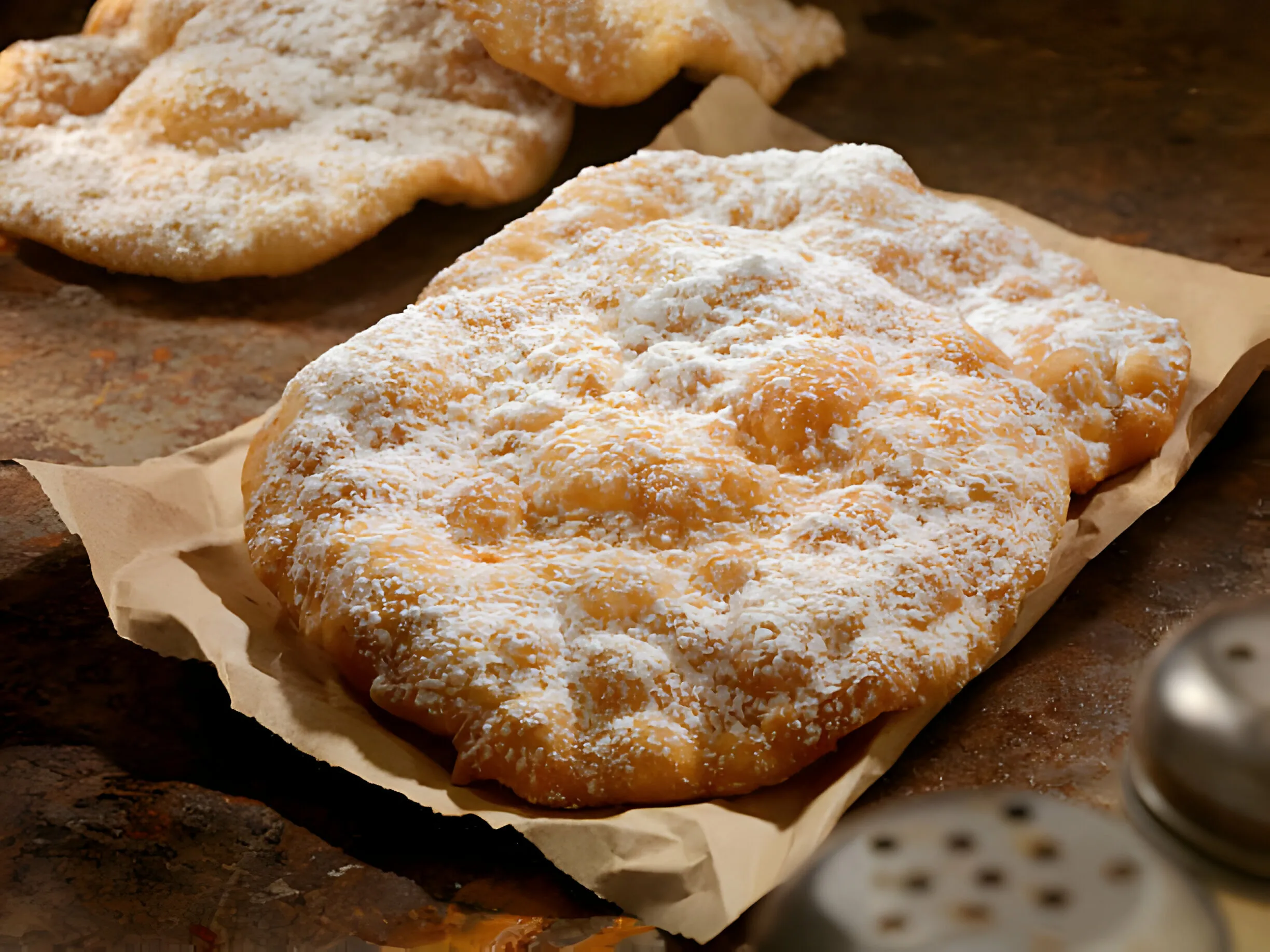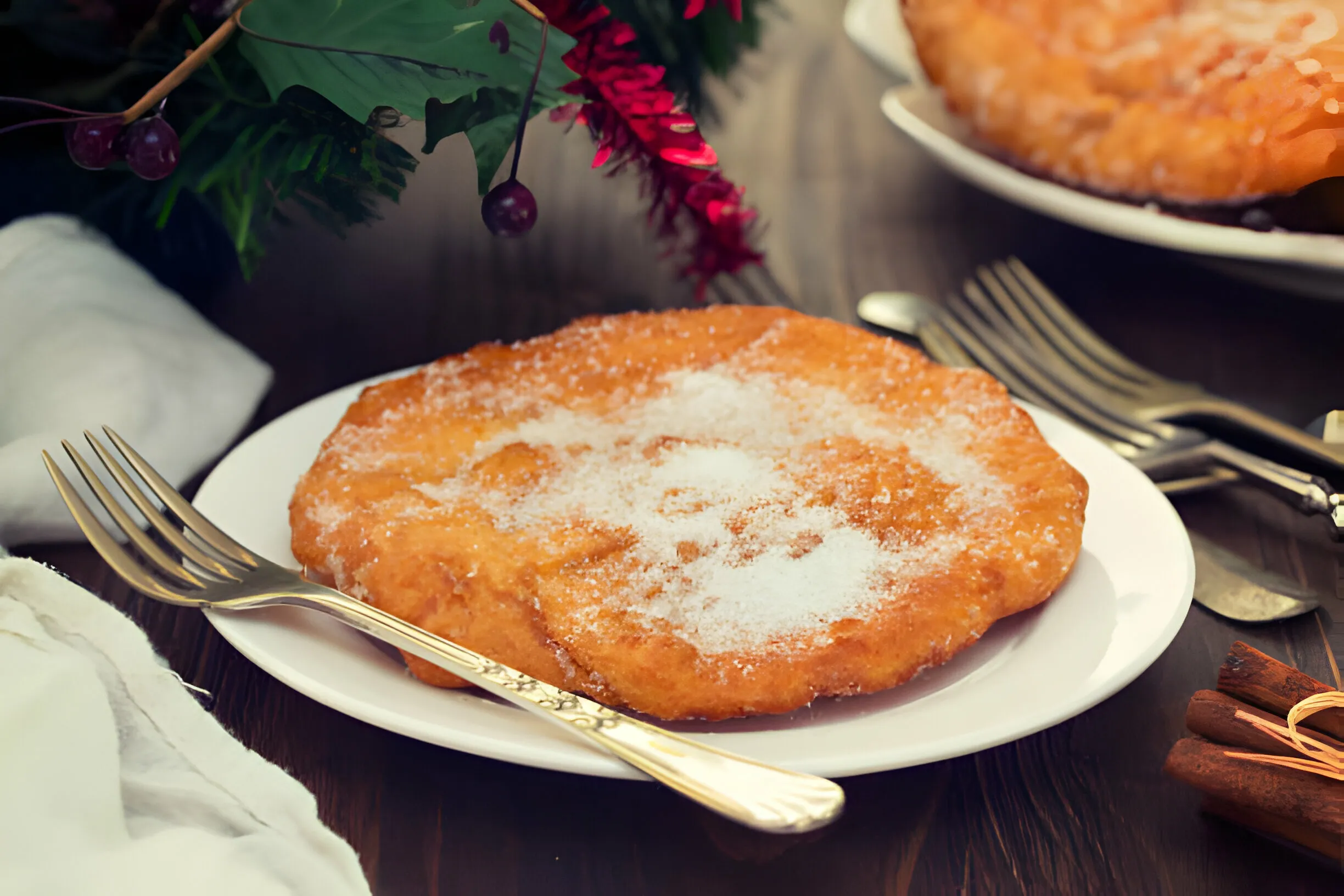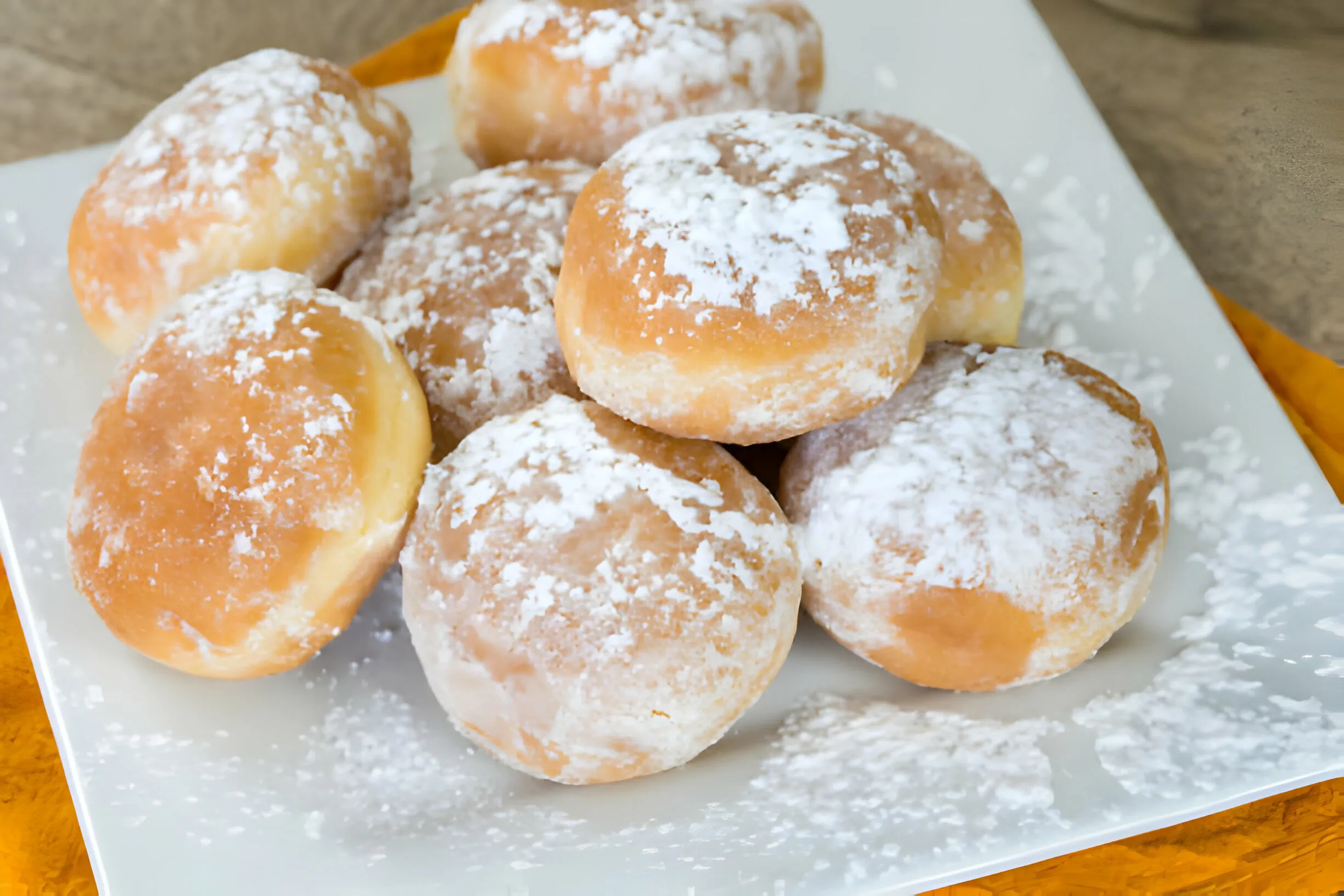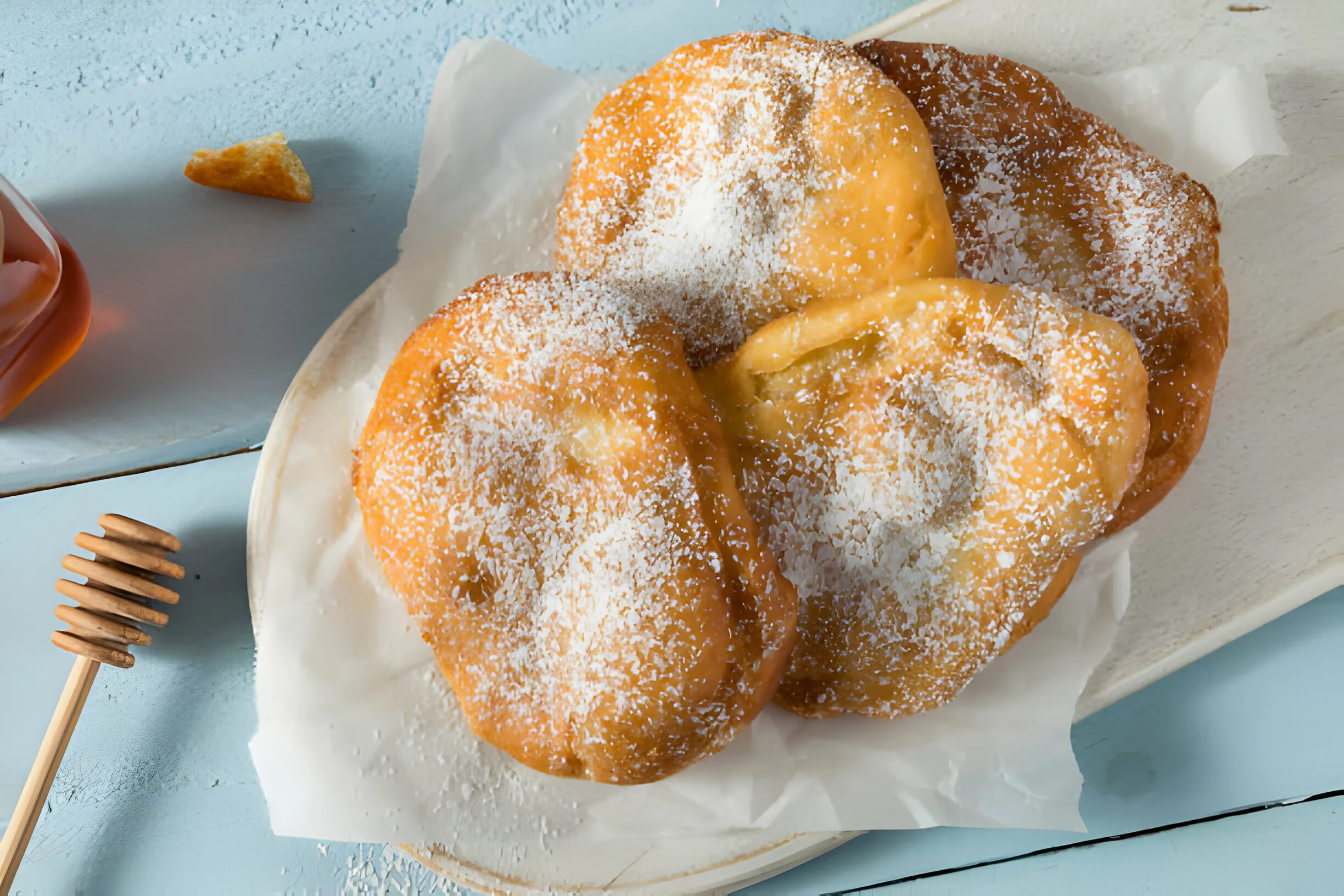Fried dough, a simple yet universal delight, has been tantalizing taste buds across the globe for centuries. From the bustling streets of New Orleans with their beignets to the cozy cafes of Istanbul serving lokma, this culinary phenomenon transcends borders and cultures. In this comprehensive guide, we’ll embark on a flavorful journey, exploring the diverse world of fried dough, its rich history, regional variations, and much more. Get ready to dive into the crispy, golden, and utterly irresistible universe of fried dough!
Introduction to Fried Dough
The World of Fried Dough
Fried dough, in its myriad forms, is a testament to culinary simplicity and diversity. This universally loved treat, found in almost every culture, offers a delicious glimpse into the world’s gastronomic heritage. From the humble doughnut to the sophisticated beignet, each variety of fried dough tells a story of regional ingredients, traditional cooking methods, and cultural celebrations.
A Global Delicacy
Fried dough, in its essence, is a celebration of basic ingredients transformed into something extraordinary. Flour, water, yeast, and sugar, when combined and kissed by hot oil, create a magical array of textures and flavors. Whether it’s the sugary crunch of a churro or the soft, pillowy texture of a beignet, fried dough in all its forms captivates the senses.
Historical Significance
The history of fried dough is as rich and varied as its flavors. Each region’s take on this culinary staple offers a window into its past. From ancient Rome’s scriblita to Native American frybread, fried dough has been a part of human history for millennia, evolving with time and travel. In exploring the origins of fried dough, the history of doughnuts offers an intriguing glimpse into how this sweet treat evolved in America.
Exploring International Fried Dough Varieties

Popular Fried Dough Recipes Around the World
Fried dough, a culinary chameleon, takes on various delicious forms across the globe. Each country adds its unique twist, creating an array of mouth-watering treats that reflect local tastes and traditions. From the savory pakoras of India to the sweet apple fritters in the United States, each culture has its unique take on fritters.
Beignets – France
In France, particularly in New Orleans, beignets reign supreme. These light, puffy squares of fried dough, dusted generously with powdered sugar, are more than just a dessert; they’re a cultural icon. Originating from French pâte à choux, beignets are a testament to the French’s culinary finesse.
Lángos – Hungary
Lángos, often dubbed the Hungarian pizza, is a beloved street food. Made from a simple dough of flour, yeast, water, and salt, lángos are deep-fried to golden perfection. Traditionally topped with garlic, sour cream, and grated cheese, they offer a savory twist to the world of fried dough.
Churros – Spain
Spain’s answer to fried dough is the churro. These long, star-shaped dough sticks are a staple in Spanish cuisine. Crispy on the outside and soft on the inside, churros are often enjoyed dipped in hot chocolate, making them a favorite at breakfast or as a snack.
Lokma – Turkey
In Turkey, lokma is a sweet symbol of celebration. These small, round dough balls are deep-fried and then soaked in syrup. Often served at religious ceremonies and celebrations, lokma is a treat that brings people together.
Doughnuts – USA
The doughnut, an American classic, needs no introduction. From glazed to jelly-filled, doughnuts come in countless varieties. Each type offers a different flavor and texture, but all share the same basic foundation: sweet, leavened fried dough.
Crafting the Perfect Fried Dough
Ingredients and Preparation Techniques
Creating the perfect fried dough is both an art and a science. Understanding the key ingredients and mastering the techniques can elevate your fried dough from good to sublime.
Essential Ingredients
The foundation of any fried dough recipe lies in its ingredients. The basics typically include:
- Flour: The backbone of fried dough, providing structure and texture.
- Leavening Agents: Yeast or baking powder, each imparting a unique texture.
- Liquids: Water or milk, which hydrate the dough.
- Fats: Butter or oil, adding richness and flavor.
- Sweeteners: Sugar or honey, for a touch of sweetness.
Each ingredient plays a crucial role in the final product’s texture and flavor.
Preparation and Cooking Techniques
The magic of fried dough lies in its preparation and cooking:
- Mixing and Kneading: Properly combining the ingredients and kneading the dough ensures the right texture.
- Resting and Rising: Allowing the dough to rest and rise is crucial, especially for yeast-based doughs.
- Shaping: From balls to twists, the shape can influence the dough’s texture and cooking time.
- Frying: The oil temperature is key. Too hot, and the outside burns before the inside cooks; too cool, and the dough absorbs too much oil.
While exploring various fried dough techniques, understanding the nuances of baking biscuits can also enhance your culinary skills.
Regional Variations and Cultural Significance

Fried Dough in Different Cultures
Fried dough, a culinary staple, varies intriguingly from one region to another, each version reflecting the unique flavors and traditions of its culture.
Regional Ingredients and Flavors
- In Italy, you’ll find zeppole and bomboloni, where the inclusion of ingredients like ricotta or citrus zest adds a distinct Italian flair.
- In India, jalebi, made with fermented batter and soaked in syrup, showcases the love for deep-fried sweets with a hint of cardamom or saffron.
- In China, youtiao, a light and airy dough, is often enjoyed as a breakfast item, dipped in soy milk or rice congee.
These variations not only offer a taste of local ingredients but also reflect the adaptability of fried dough recipes to what’s locally available.
Cultural Traditions and Celebrations
Fried dough often plays a significant role in cultural traditions and celebrations:
- In Jewish cuisine, sufganiyot are a Hanukkah staple, symbolizing the miracle of the oil.
- During Mardi Gras, New Orleans’ streets are filled with the sweet aroma of beignets, a festive treat linked to this vibrant celebration.
- In many Native American communities, frybread holds historical significance, representing survival and resilience.
These dishes are more than just food; they are a part of cultural identity and heritage, often associated with stories, memories, and communal gatherings.
Health and Nutrition
Nutritional Aspects of Fried Dough
While fried dough is undeniably delicious, it’s important to consider its nutritional aspects, especially for those mindful of their health and diet.
Caloric Content and Health Considerations
Fried dough, by its very nature, is high in calories and fat due to the frying process. The oil not only adds flavor and texture but also contributes significantly to the overall calorie count. Additionally, ingredients like sugar and butter increase the caloric value.
For those concerned about health implications, such as increased cholesterol or the risk of heart disease, moderation is key. Enjoying fried dough as an occasional treat rather than a regular part of your diet can help balance these concerns.
Healthier Alternatives and Modifications
For a healthier take on fried dough:
- Use Healthier Oils: Opt for oils with a higher smoke point and healthier fat profile, like canola or avocado oil.
- Baking Instead of Frying: Many fried dough recipes can be adapted for baking, significantly reducing the fat content.
- Incorporate Whole Grains: Substituting a portion of all-purpose flour with whole wheat flour adds fiber and nutrients.
- Reduce Sugar: Experiment with reducing the sugar content or using natural sweeteners like honey or maple syrup.
For a healthier alternative, recipes like oven-fried squash demonstrate how frying can be adapted to suit health-conscious preferences.
Creative Twists on Traditional Fried Dough

Innovating with Classic Recipes
Fried dough, a beloved classic, offers a canvas for culinary creativity. In this section, we’ll explore how to breathe new life into traditional recipes, infusing them with innovative and unexpected twists.
Fusion Flavors
- Global Flavor Infusions: Firstly, imagine transforming the humble doughnut with a sprinkle of matcha powder, introducing a subtle, earthy flavor reminiscent of Japanese tea ceremonies. Additionally, consider infusing churro dough with cardamom, adding an aromatic warmth that transports you to the bustling markets of India. For those who enjoy the sweet fusion of fruit and fried dough, trying out apple pie biscuits can be a delightful experience.
Sweet and Savory Combinations
- Balancing Tastes: The interplay of sweet and savory can elevate fried dough to new heights. For instance, picture biting into a savory doughnut filled with creamy goat cheese and topped with a drizzle of honey and a pinch of sea salt. Consequently, this combination creates a symphony of flavors that dance on the palate, offering a delightful contrast.
Health-Conscious Adaptations
Alternative Ingredients
- Gluten-Free and Vegan Options: For those with dietary restrictions, the world of fried treats is still full of possibilities. Gluten-free flour blends can be used to create doughnuts that are just as fluffy and delicious as their traditional counterparts. Similarly, vegan alternatives like flax eggs and almond milk can be used to cater to plant-based diets without compromising on taste.
Lighter Cooking Methods
- Air Frying and Oven Baking: These methods provide a healthier alternative to traditional deep frying. Air-fried doughnuts offer a lighter, less greasy option, while oven-baked churros retain their signature crunch without the extra oil. Moreover, these methods not only reduce the calorie content but also open up new textures and flavors.
Interactive Cooking Experiences
DIY Fried Dough Parties
- Home Cooking Fun: Hosting a fried dough-making party can be a delightful way to engage with friends and family. Set up a DIY station with various dough types, toppings, and fillings. Guests can experiment with creating their own unique fried treats treats, turning the cooking process into a fun and interactive experience.
Frequently Asked Questions
Common Queries
Fried dough, with its simple ingredients and diverse variations, often raises questions among enthusiasts and home cooks. This section aims to address some of the most common inquiries.
- Can I make fried dough without yeast?
- Yes, you can use baking powder or baking soda as leavening agents for a quicker, no-rise version of fried dough.
- What is the best oil for frying dough?
- Neutral oils with a high smoke point, like vegetable, canola, or peanut oil, are ideal for frying dough as they don’t impart additional flavors and can handle high temperatures.
- How do I know when the oil is hot enough for frying?
- A cooking thermometer is the most accurate way. The ideal temperature is typically between 350°F to 375°F (175°C to 190°C). Alternatively, you can test the oil with a small piece of dough; it should sizzle and float to the top when the oil is ready.
Expert Answers and Tips
- How can I prevent my fried dough from absorbing too much oil?
- Ensure the oil is at the right temperature before adding the dough. If the oil is too cool, the dough will absorb more oil.
- Can fried dough be made ahead of time?
- While best enjoyed fresh, you can prepare the dough ahead of time and refrigerate it. However, it’s recommended to fry it just before serving for the best texture and flavor.
- Are there any gluten-free options for fried dough?
- Yes, you can use gluten-free flour blends designed for baking. These blends often include a mix of rice flour, potato starch, and xanthan gum to mimic the texture of gluten.
Conclusion and Further Exploration
The Endless Appeal of Fried Dough
As we conclude our journey through the delightful world of fried dough, it’s clear that this humble mixture of flour, water, and leavening agents is much more than a simple treat. It’s a canvas for culinary creativity, a reflection of cultural heritage, and a source of comfort and joy for many.
Summary of Key Points
- Fried dough comes in countless forms across the globe, each with its unique set of ingredients and preparation methods.
- While indulgent, it’s important to enjoy fried treats in moderation due to its high caloric and fat content.
- There are numerous ways to customize fried dough, making it healthier or adapting it to dietary needs.
Further Reading and Exploration
For those eager to delve deeper into the world of fried dough, a wealth of resources awaits. Exploring culinary blogs, cookbooks, and cultural histories can provide further insights into this versatile dish. Experimenting with different recipes and techniques at home can also be a delightful way to appreciate the nuances of fried treats.
In conclusion, fried treats is a testament to the beauty of culinary simplicity and the joy it can bring to our tables. Whether you’re enjoying a sugar-dusted beignet, a savory lángos, or a homemade doughnut, the world of fried dough offers endless possibilities for exploration and enjoyment.

